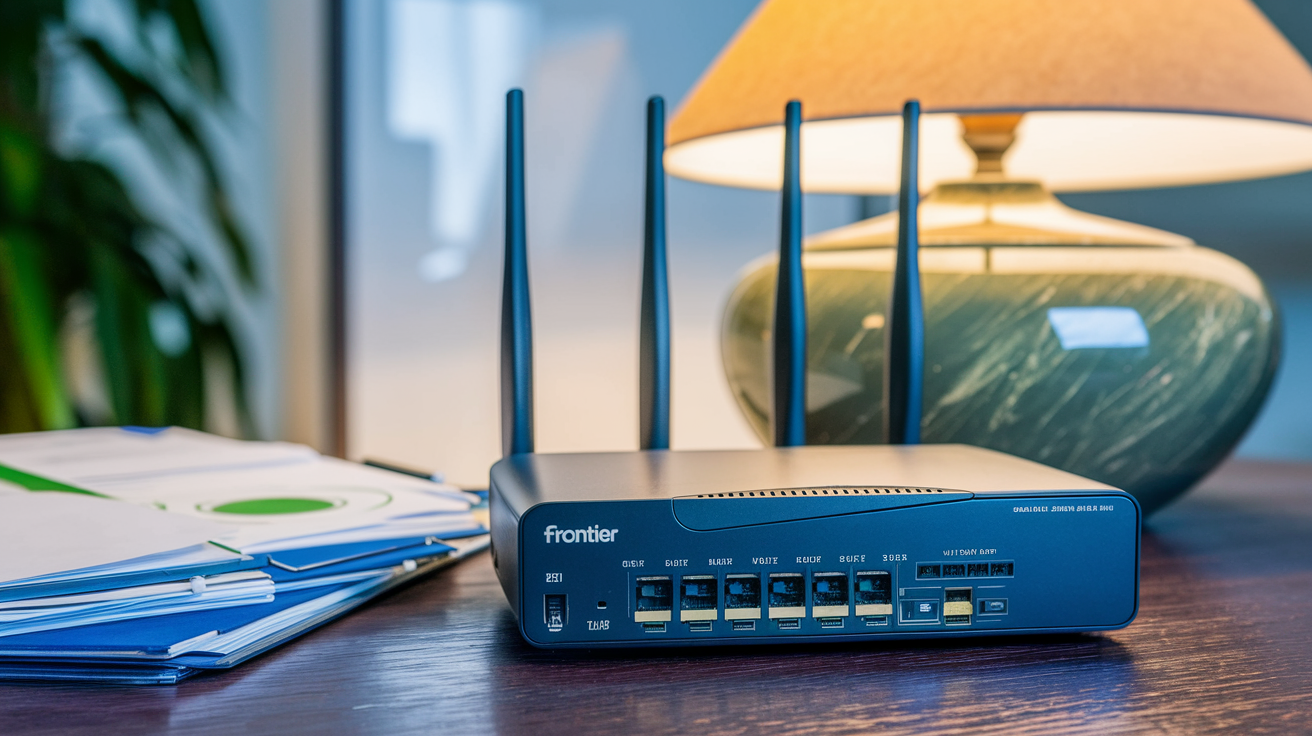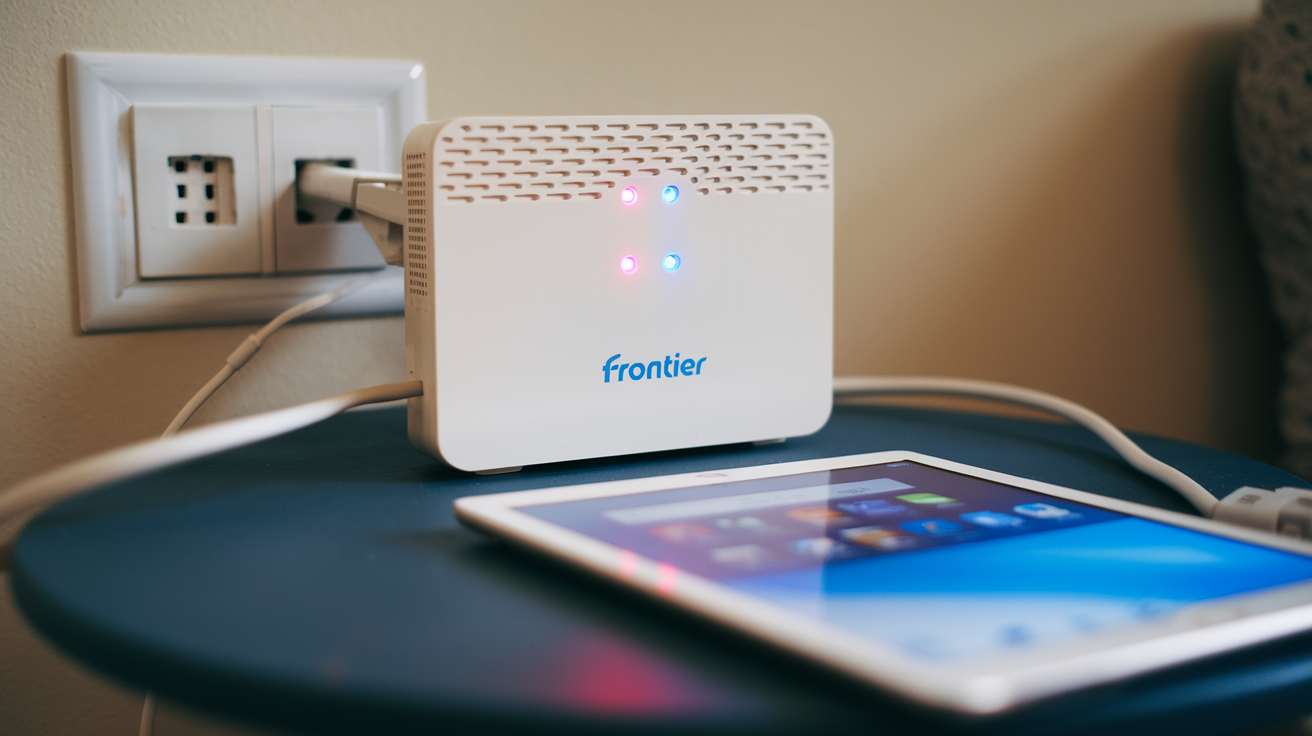
Navigating your Frontier internet bill after the initial promotional period can be a surprise. This guide reveals the true cost of Frontier internet beyond 12 months, detailing common price hikes, hidden fees, and strategies to keep your expenses predictable.
Understanding Frontier's Pricing Structure
Frontier Communications, like many internet service providers (ISPs), employs a pricing strategy that often begins with attractive introductory offers designed to lure new customers. While these initial discounts can make Frontier's services seem incredibly affordable, it's crucial to understand that these are temporary. The core of your long-term billing concern lies in what happens when these promotional periods conclude. This section delves into the fundamental components of Frontier's pricing, setting the stage for understanding the potential shifts in your monthly expenditure. We'll explore how base rates, promotional discounts, equipment rentals, and potential add-on services all contribute to your final bill, with a particular focus on the transition from introductory pricing to standard rates. Understanding these elements is the first step in accurately predicting your Frontier internet bill after 12 months.
The Anatomy of an ISP Bill
A typical internet service provider bill, including Frontier's, is rarely a simple reflection of the advertised monthly price. It's a composite of several charges. At its base, there's the advertised monthly rate for the internet speed tier you select. This is often heavily discounted for a specified period, typically the first 12 months. Beyond this promotional rate, there are other significant factors. Equipment rental fees, for instance, are common; Frontier may charge a monthly fee for the modem or router necessary to access their service. Then come taxes and government-regulated fees, which vary by location but are always present. Finally, there are often additional service charges or surcharges that might not be immediately obvious when signing up. Recognizing each of these components is vital for accurate budgeting.
Promotional Pricing vs. Standard Rates
The most significant driver of bill shock after 12 months is the difference between promotional pricing and standard rates. Introductory offers are marketing tools. They are designed to be compelling enough to secure your business. For example, a plan advertised at $49.99 per month might be a promotional rate valid for one year. Once that year is up, the price will revert to the provider's standard rate for that specific service tier. This standard rate is typically higher, sometimes significantly so. It's imperative to ask for and understand the standard rate at the time of signup. Many customers overlook this detail, focusing solely on the initial low price, and are then surprised when their bill jumps. In 2025, this practice remains a cornerstone of ISP marketing, making diligent inquiry a necessity for consumers.
Factors Influencing Base Price
Several factors influence the base price of Frontier internet plans, even before promotional discounts are applied. The primary determinant is the internet speed or bandwidth offered. Higher speeds, capable of supporting more devices and more demanding online activities like 4K streaming and online gaming, naturally come with a higher base price. The type of technology used also plays a role; fiber optic internet, which Frontier offers in many areas, is generally more expensive to deploy and maintain but offers superior performance, leading to higher base rates compared to DSL or cable in some markets. Additionally, geographic location can influence pricing due to varying infrastructure costs and local market competition. Understanding these underlying factors helps contextualize the advertised prices and the subsequent standard rates.
Introductory Offers and Promotions
Frontier's marketing heavily relies on enticing introductory offers. These promotions are designed to attract new subscribers by significantly reducing the monthly cost for a defined period, most commonly 12 months. Understanding the specifics of these deals is paramount to avoiding surprises. This section will dissect the typical structure of Frontier's introductory offers, highlight common promotional durations, and explain how these discounts are applied to your bill. We will also touch upon the importance of reading the fine print associated with these deals, as they often contain clauses that dictate the price after the promotional period ends. In 2025, these offers remain a primary acquisition strategy for Frontier, making it essential for consumers to be well-informed.
Common Promotional Durations
The most prevalent promotional duration offered by Frontier, and indeed many ISPs, is 12 months. This period provides a substantial introductory discount, making the service highly attractive for the first year. However, it's not uncommon to see shorter promotional periods, such as 6 months, or occasionally longer ones, though these are less frequent. The length of the promotion directly impacts how long you benefit from the lower price before the standard rate kicks in. It's crucial to confirm the exact duration of any promotional offer you are considering. A 12-month promotion means your bill will increase after the first year, whereas a 6-month promotion means the increase will occur sooner. Always verify this detail with the sales representative or in the service agreement.
How Discounts Are Applied
Promotional discounts are typically applied as a direct reduction from the standard monthly rate for the chosen internet plan. For instance, if a plan's standard rate is $70 per month, and there's a $20 per month promotional discount for 12 months, your bill for the first year would reflect a price of $50 per month (before taxes, fees, and other charges). This discount is usually applied automatically by Frontier's billing system once the promotion is activated. However, the key is that this discount is temporary. After the specified promotional period expires, the discount is removed, and you will be charged the full standard rate for that plan. It's vital to understand that the advertised price is almost always the promotional price, not the long-term cost.
Reading the Fine Print
The "fine print" of any internet service contract is where crucial details about pricing, especially after promotional periods, are often hidden. This includes information on the standard rate that will apply after the introductory offer expires, any potential price increases that might occur even during the promotional period (though less common), and the terms for equipment rental or purchase. It's also where you'll find details about early termination fees. Before signing any contract, take the time to read through the entire agreement. If anything is unclear, do not hesitate to ask the sales representative for clarification. A reputable ISP will be transparent about these terms. For Frontier, understanding what happens at the 12-month mark is explicitly detailed in the contract's terms and conditions.
Common Fees and Surcharges to Watch For
Beyond the base price and promotional discounts, Frontier's internet bills can include a variety of fees and surcharges that can incrementally increase your monthly cost. These are often standard industry practices but can catch unsuspecting customers off guard. This section aims to demystify these additional charges, explaining what they are, why they are applied, and how they contribute to your overall bill. By understanding these potential additions, you can better estimate your true monthly expenditure and identify areas where costs might be minimized. In 2025, vigilance regarding these fees remains a critical aspect of managing your internet budget effectively.
Equipment Rental Fees
Many ISPs, including Frontier, offer the option to rent essential equipment like modems and Wi-Fi routers. While this can be convenient, as it often includes support and replacement if the equipment fails, it comes with a recurring monthly charge. For example, Frontier might charge $10-$15 per month for modem rental. Over a year, this adds up to $120-$180. Some customers may opt to purchase their own compatible equipment, which can be a significant cost saving in the long run, although it requires initial investment and may void certain support options from the ISP. It's crucial to know if equipment rental is included in your plan and what the monthly cost is. This fee is typically applied regardless of whether a promotional discount is active.
Taxes and Government Fees
Nearly all internet bills are subject to federal, state, and local taxes and government-mandated fees. These are not optional charges imposed by Frontier but rather regulatory requirements. Examples include federal subscriber line charges, federal universal service fund contributions, state sales taxes, and various local franchise fees or regulatory recovery fees. The exact amount of these taxes and fees varies significantly depending on your specific location. While Frontier cannot control these, they are responsible for collecting and remitting them to the appropriate government bodies. These charges are usually a fixed percentage or a set amount, and they will apply to your bill even after promotional periods end, contributing to the overall increase in cost.
Service Call Fees
If you require a technician to visit your home for installation, troubleshooting, or repairs, Frontier may charge a service call fee. This fee can range from $50 to $100 or more, depending on the nature of the service call and whether the issue is deemed to be within your control or the responsibility of Frontier. While some service calls might be covered under warranty or if there's a proven network issue on Frontier's end, it's wise to be aware of these potential charges. Opting for self-installation when possible and troubleshooting common issues yourself can help avoid these fees. This is another charge that is generally not affected by promotional pricing on your internet service itself.
Late Payment Fees
As with most utility and service bills, Frontier imposes late payment fees if your payment is not received by the due date. These fees can be a flat amount or a percentage of the overdue balance. Consistently paying your bill on time is the easiest way to avoid these additional costs. Late fees are separate from the service charges and are applied directly to your account when a payment is delinquent. They are not part of the introductory offer and will apply regardless of the promotional status of your internet plan. Understanding your billing cycle and due dates is essential to prevent these avoidable charges.
Plan Tiers and Their Long-Term Costs
Frontier offers a range of internet plans, typically categorized by speed. The advertised price for each tier is usually a promotional rate. Understanding the standard rate for each tier after the promotional period expires is critical for long-term budgeting. This section will explore common Frontier internet plan tiers available in 2025, detailing their typical promotional pricing and, more importantly, their projected standard rates. We will also discuss how the speed of the plan impacts its overall cost and the value proposition beyond the initial 12 months. Making an informed choice about your plan tier at the outset can prevent significant bill increases later.
Fiber vs. DSL Plans
Frontier primarily offers two types of internet technology: Fiber Optic (FiOS) and Digital Subscriber Line (DSL). Fiber optic internet provides significantly faster speeds, lower latency, and greater reliability compared to DSL. Consequently, fiber plans are generally more expensive. DSL plans, which utilize existing telephone lines, are often more affordable but offer lower speeds, suitable for basic internet usage. When considering your bill after 12 months, the technology type is a major factor. A fiber plan that starts at $50/month with a promotion might jump to $80-$100/month at standard rates, while a DSL plan that starts at $35/month might rise to $55-$65/month. Your location will determine which technology is available.
Typical Speed Tiers and Associated Costs (2025 Estimates)
In 2025, Frontier's plan offerings can vary, but common speed tiers and their estimated costs might look like this:
| Plan Tier (Speed) | Estimated Promotional Price (12 Months) | Estimated Standard Price (After 12 Months) | Typical Use Case |
|---|---|---|---|
| Basic (Up to 50 Mbps DSL) | $30 - $40/month | $50 - $65/month | Email, web browsing, social media, light streaming |
| Standard (100-300 Mbps Fiber) | $45 - $60/month | $70 - $90/month | HD streaming, multiple device usage, online gaming |
| Premium (500 Mbps - 1 Gbps Fiber) | $60 - $80/month | $90 - $120/month | 4K streaming, heavy gaming, large file downloads, smart homes |
Note: These are estimated figures for 2025 and can vary significantly by region and specific promotions. Always confirm exact pricing with Frontier.
The Impact of Speed on Long-Term Value
Choosing a higher speed tier means a higher base price, and therefore, a higher standard rate after the promotion ends. While faster speeds offer a better user experience, especially for households with multiple users and devices, it's essential to select a speed that genuinely meets your needs. Over-provisioning for speed you don't use will lead to a higher monthly bill that is harder to manage long-term. Conversely, choosing a speed that is too slow will result in frustration and poor performance, potentially leading you to upgrade later at a non-promotional rate. The true long-term value lies in finding the sweet spot between performance and cost.
Bundling Services: Pros and Cons
Frontier may offer bundles that include internet, TV, and/or phone services. Bundling can sometimes offer a discount compared to subscribing to each service individually. However, it also ties you into a larger package, and if you don't use all the services, you might be paying for something you don't need. When considering a bundle, carefully evaluate the cost of each component separately versus the bundled price, both during the promotional period and at standard rates. The promotional discount might apply to the entire bundle, but the standard rate for the bundle could still be higher than individual services from different providers.
Hidden Costs and Unexpected Increases
While introductory offers are a primary concern, other less obvious factors can contribute to your Frontier internet bill increasing unexpectedly after the initial 12 months. These "hidden costs" are often overlooked during the signup process but can significantly impact your budget. This section will explore these potential pitfalls, from price adjustments not tied to promotions to the consequences of exceeding data caps (if applicable) or changes in equipment policies. Being aware of these possibilities will equip you to better anticipate and manage your monthly expenses with Frontier.
Annual Price Adjustments
Even after your initial promotional period ends, some ISPs, including Frontier, may implement annual price adjustments. This means that your standard rate, which you started paying after month 12, could increase again each year. These adjustments are typically not advertised widely but are often detailed in the terms of service or a notice sent with your bill. These increases are usually modest, perhaps a few dollars per year, but they contribute to the overall upward trend of your monthly bill over time. This is a critical point: your bill might not just revert to a higher rate at 12 months, but could continue to creep up annually.
Data Caps and Overage Charges (If Applicable)
While many fiber internet providers, including Frontier in most of its fiber offerings, do not impose data caps, some DSL plans or specific regional plans might have them. A data cap is a limit on the amount of data you can download and upload each month. Exceeding this limit typically incurs overage charges, which can be substantial. For example, exceeding a 1TB data cap might cost $10-$20 per 50GB of additional data used. If your plan has a data cap, monitor your usage closely, especially if you stream a lot of video, play online games, or download large files. This is a significant potential hidden cost that can drastically increase your bill beyond the standard rate.
Changes in Service or Equipment Policies
Frontier, like any company, can change its service terms, equipment policies, or fee structures over time. For example, a fee for equipment rental that was previously waived might be introduced, or the cost of existing rental equipment could increase. While major changes usually require notification, smaller adjustments can sometimes slip by unnoticed. Staying informed about your service agreement and any communications from Frontier regarding policy updates is a good practice to avoid surprises. This is particularly relevant for customers who have had their service for several years.
The Cost of Add-On Services
When signing up, you might be offered various add-on services, such as enhanced Wi-Fi security, premium support packages, or specific channel add-ons for TV if bundled. These services come with their own monthly fees. If you're not careful, these can accumulate and add to your bill. Furthermore, some add-on services might have their own promotional periods, and their cost could increase after that period expires, independent of your internet service's promotional status. Always review your bill to ensure you are only paying for services you actively use and want.
Strategies to Manage Your Frontier Bill After 12 Months
The prospect of your Frontier internet bill increasing after the initial promotional period can be daunting. However, with proactive strategies, you can mitigate these increases and maintain a predictable monthly expense. This section provides actionable advice on how to manage your Frontier bill effectively once the introductory offers expire. From negotiating with Frontier to exploring alternative plans and providers, these strategies are designed to help you keep your internet costs under control in the long term. In 2025, these proactive measures are more important than ever for budget-conscious consumers.
Negotiate with Frontier Before Your Promotion Ends
The most effective strategy is often to contact Frontier customer service or retention department *before* your 12-month promotional period expires. Many customers wait until their bill increases significantly, only then realizing their options. By calling in advance, you can inquire about available loyalty discounts, new promotions, or alternative plans that might be suitable for your needs at a more affordable rate. Explain that you are a long-standing customer (even if only for 11 months) and are looking for ways to keep your service cost down. ISPs are often willing to offer new deals to retain existing customers rather than lose them to a competitor.
Evaluate Your Current Plan and Needs
Once your promotional period ends, take a moment to re-evaluate your current internet plan. Are you actually using the speeds you are paying for? If you signed up for a high-speed fiber plan for heavy gaming and streaming but now find yourself mostly browsing and checking email, you might be overpaying. Conversely, if your household has grown, or your internet usage has increased (e.g., more smart home devices, remote work), you might need to upgrade. Comparing your current usage against your plan's capabilities can help you decide whether to stick with your current tier at the new rate, downgrade, or upgrade.
Consider Downgrading Your Speed
If your needs have changed or you simply want to reduce your monthly bill, downgrading your internet speed is a viable option. As discussed earlier, Frontier offers various speed tiers. If you are on a premium plan but only use basic internet functions, moving to a standard or even a basic plan can significantly reduce your monthly cost after the promotional period. Ensure that the lower speed tier still meets your essential internet needs to avoid frustration. Always confirm the standard rate for the downgraded plan, as it might still be higher than your initial promotional rate.
Explore Frontier's Other Available Plans
Frontier may have different plan structures or promotional offers available that are not the same as the one you initially signed up for. Sometimes, a newer promotional offer for existing customers might be more attractive than staying on the standard rate of your old plan. It's worth asking the representative if there are any "new customer" style promotions you might be eligible for as a loyal customer, or if there are specific "customer retention" offers available. These can sometimes be as good as, or even better than, the initial signup deals.
Consider Switching Providers
If Frontier is unable or unwilling to offer you a satisfactory rate after your promotional period ends, it may be time to explore competitors in your area. Research other ISPs that offer internet service at your address. Compare their standard rates, promotional offers, and available speeds. Sometimes, switching to a competitor, even with the hassle of a new installation, can result in significant long-term savings. Remember to factor in any installation fees or equipment costs from the new provider when making your comparison. For many, the end of a promotional period is the perfect time to reassess the entire market.
Real-World Examples and Scenarios
To truly grasp how your Frontier internet bill can change after 12 months, let's examine some realistic scenarios. These examples illustrate the impact of promotional periods, standard rates, and potential fees on different customer profiles. By walking through these scenarios, you can better anticipate your own situation and plan accordingly. These examples are based on typical 2025 pricing structures and common consumer behaviors.
Scenario 1: The Basic User
Meet Sarah. She lives alone and primarily uses the internet for checking emails, browsing news websites, and occasional social media scrolling. She signed up for Frontier's 50 Mbps DSL plan on a 12-month promotion for $35/month. Her bill also included $3 for regulatory fees and $10 for modem rental, totaling $48/month for the first year.
After 12 Months:
- Promotional discount expires.
- Standard rate for 50 Mbps DSL: $55/month.
- Regulatory fees: $3/month (unchanged).
- Modem rental: $10/month (unchanged).
- New Total Monthly Bill: $68/month.
Sarah's bill increases by $20 per month, a 41.7% jump. She might consider downgrading if her usage doesn't change, or negotiate for a better rate.
Scenario 2: The Streaming Family
The Miller family (parents and two teenagers) needs reliable internet for multiple devices, HD streaming, and online gaming. They opted for Frontier's 300 Mbps Fiber plan on a 12-month promotion for $55/month. Their bill also included $5 in taxes/fees and $15 for modem/router rental, totaling $75/month for the first year.
After 12 Months:
- Promotional discount expires.
- Standard rate for 300 Mbps Fiber: $85/month.
- Taxes/Fees: $5/month (unchanged).
- Modem/Router rental: $15/month (unchanged).
- New Total Monthly Bill: $105/month.
The Millers see a $30 increase, a 40% rise. They might negotiate for a retention offer or explore higher-tier plans if their usage demands it, but the immediate jump is significant.
Scenario 3: The Early Adopter with Add-ons
John signed up for Frontier's 1 Gbps Fiber plan, attracted by the speed. His initial promotion was $70/month for 12 months. He also added a premium Wi-Fi security service for $10/month (promotional for 6 months) and rented equipment for $15/month. His taxes and fees were $7/month. His bill for the first year averaged around $102/month (with the security service discount for half the year).
After 12 Months:
- Internet promotional discount expires.
- Standard rate for 1 Gbps Fiber: $110/month.
- Wi-Fi security service standard rate: $15/month (after 6-month promo).
- Modem/Router rental: $15/month (unchanged).
- Taxes/Fees: $7/month (unchanged).
- New Total Monthly Bill: $147/month.
John experiences a substantial increase of $45/month (or 30.6% from his initial average). This highlights how add-on services and their own promotional expirations can compound the bill increase. He will need to decide if the premium speed and security are worth the higher cost or if he can find a better deal.
Comparing Frontier to Competitors Post-Promotion
Understanding how Frontier's pricing stacks up against competitors *after* the promotional period is crucial for making an informed decision about your internet service. Many providers use similar introductory offer tactics, meaning the landscape can shift significantly once initial discounts expire. This section will guide you through the process of comparing Frontier's standard rates with those of other major ISPs, considering factors beyond just the monthly price. In 2025, the competitive landscape is dynamic, and a thorough comparison is your best tool for ensuring long-term value.
Identifying Competitors in Your Area
The first step is to identify which other internet service providers operate in your specific geographic location. Major national competitors include companies like Spectrum, Xfinity (Comcast), AT&T, and Verizon Fios (where available). In some areas, local cable companies or smaller regional ISPs might also offer service. You can typically find this information by entering your address on the websites of these providers. Don't assume a provider is unavailable; always check directly. Understanding your local options is key to leveraging competition to your advantage.
Comparing Standard Rates and Fees
Once you have a list of potential competitors, visit their websites and look for their standard pricing for plans comparable to what you need. Pay close attention to:
- Base Monthly Rate: What is the price for a similar speed tier without any promotions?
- Equipment Rental Fees: Are there monthly charges for modems or routers, and how much are they?
- Installation Fees: What is the cost for new service installation?
- Taxes and Surcharges: While these vary, some providers might have slightly different structures or amounts.
- Data Caps: Do they have data caps, and what are the overage charges?
Bundling Options and Discounts
Competitors may offer bundles that include TV, phone, or mobile services. Like Frontier, these bundles can sometimes provide savings, but always scrutinize them. If you only need internet, a standalone internet plan from a competitor might be cheaper than a bundle from Frontier or another provider. If you are open to bundling, compare the total cost of various bundled packages against the cost of individual services from different providers. Remember that promotional pricing on bundles also expires.
Contract Lengths and Early Termination Fees
Be aware of the contract terms for each provider. Some ISPs require a 12-month or 24-month contract, while others offer month-to-month service. If you break a contract early, you will likely incur an Early Termination Fee (ETF). When comparing providers, consider the flexibility you need. If you might move or want to switch services again soon, a no-contract option is preferable, even if the standard monthly rate is slightly higher. Frontier's contracts and ETFs should be clearly understood before signing.
Customer Service and Reliability
Beyond price, consider customer service reputation and network reliability. Online reviews, consumer reports, and word-of-mouth can provide insights into how well each provider handles customer issues and how consistently their service performs. A slightly higher monthly bill might be worth it for a provider with consistently better customer support and fewer service outages. While price is a major factor after promotions end, don't overlook the overall value proposition.
Making the Right Choice for Your Budget
Choosing an internet provider is a significant financial decision, especially when considering the long-term costs beyond initial promotions. This final section consolidates the information presented, offering a clear framework for making the right choice that aligns with your budget. We'll emphasize proactive planning, diligent research, and informed decision-making to ensure you are not caught off guard by rising Frontier internet bills after 12 months. By following these recommendations, you can secure reliable internet service without breaking the bank.
Proactive Planning is Key
The single most important strategy is to plan ahead. Do not wait until your promotional period is about to end to think about your bill. As soon as you sign up for Frontier internet, mark your calendar for about 10-11 months later. This gives you ample time to research your options, contact Frontier for retention offers, and compare with competitors. Understanding that the introductory price is temporary and budgeting for the eventual standard rate from day one is crucial for financial preparedness.
Understand Your True Needs
Be honest about your internet usage. Do you need gigabit speeds for a household of ten, or are you a single user who browses the web? Overspending on speed you don't utilize is a common pitfall that leads to higher bills. Conversely, underestimating your needs can lead to frustration and the potential need to upgrade later at non-promotional rates. Assess your household's typical online activities, the number of connected devices, and your tolerance for slower speeds.
Always Ask for the Standard Rate
When inquiring about any internet plan, always ask for the standard monthly rate that applies *after* the promotional period ends. Do not rely solely on the advertised introductory price. Get this information in writing if possible, or at least confirm it verbally and note the date and name of the representative you spoke with. This transparency is vital for accurate budgeting and avoiding surprises.
Leverage Competition
The internet service provider market is competitive. Use this to your advantage. If Frontier's standard rates are too high, or they are unwilling to offer you a competitive deal, be prepared to switch. Researching competitor offers and even mentioning them to Frontier's retention department can sometimes lead to better deals. The threat of losing a customer is a powerful negotiation tool.
Read Your Contract Carefully
Before signing any agreement, read the entire contract. Pay special attention to clauses regarding pricing changes, promotional period expirations, equipment fees, and early termination fees. If you don't understand something, ask for clarification. A clear understanding of the terms and conditions will prevent disputes and unexpected charges down the line. By being an informed consumer, you can ensure your Frontier internet bill remains manageable and predictable, even after the initial savings period concludes.
In conclusion, understanding how much your Frontier internet bill will truly be after 12 months requires looking beyond the enticing introductory offers. By dissecting Frontier's pricing structure, scrutinizing fees, evaluating plan tiers, and employing smart management strategies, you can navigate the transition from promotional to standard rates with confidence. Proactive negotiation, a clear assessment of your needs, and a willingness to explore competitive options are your most powerful tools. This comprehensive approach ensures you receive reliable internet service that fits your budget long-term, avoiding the common pitfall of unexpected bill increases.






